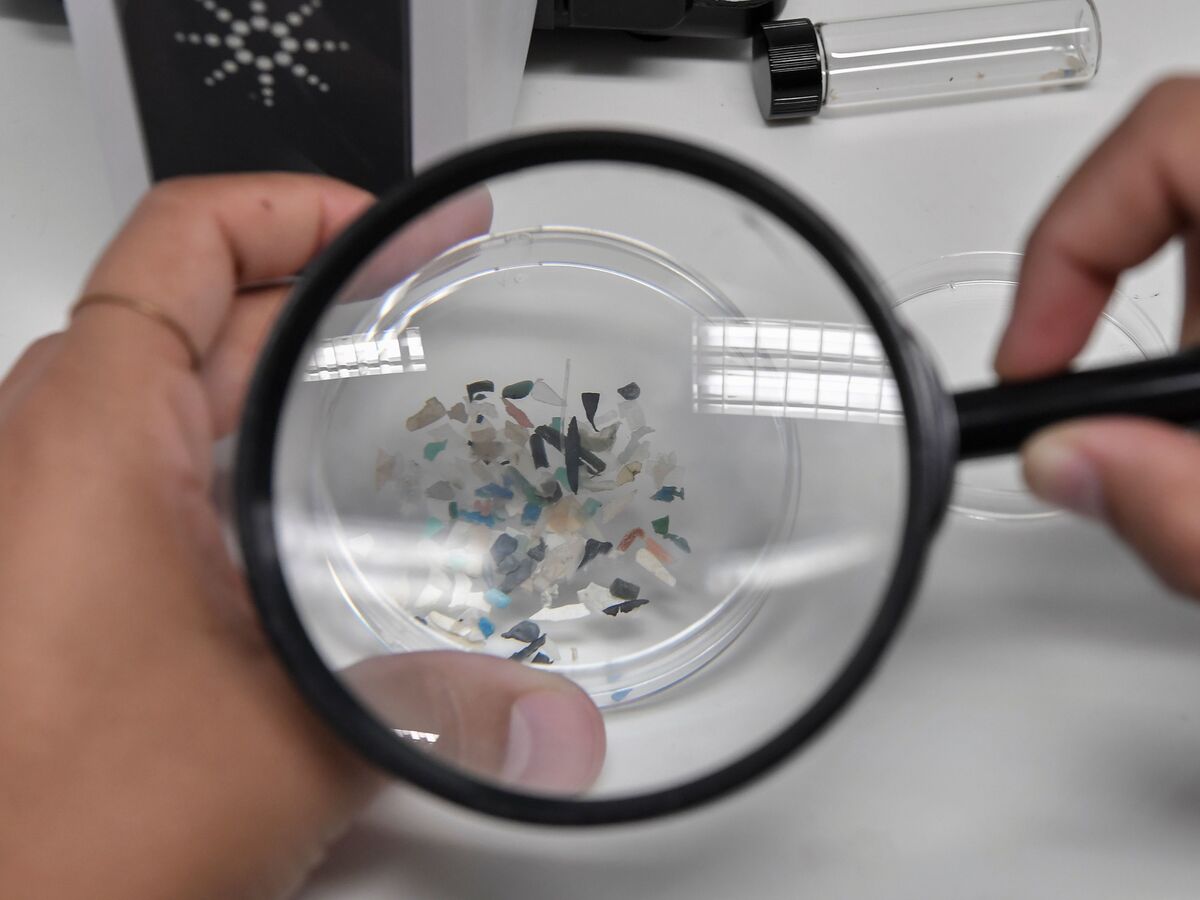The Atlantic Is Awash With Far More Plastic, Than Previously Thought, Study Finds

Enlarge this image
In addition to large plastic trash, researchers estimate that more than 21 million metric tons of tiny plastic debris are floating well below the Atlantic Ocean’s surface.
Michael O’Neill/Science Source
hide caption
toggle caption
Michael O’Neill/Science Source

Enlarge this image
Microplastics have been found inside sea animals including turtles off the coast of Greece. A study suggests there is more plastic pollution in the Atlantic Ocean than previously thought.
Louisa Gouliamaki/AFP via Getty Images
hide caption
toggle caption
Louisa Gouliamaki/AFP via Getty Images
Microplastics have been found inside sea animals including turtles off the coast of Greece. A study suggests there is more plastic pollution in the Atlantic Ocean than previously thought.
Louisa Gouliamaki/AFP via Getty Images
The new study finds that the total amount of plastic making its way into the Earth’s oceans is likely higher than previous estimates suggest. A previous study published in 2015 estimated that upwards of 12 million metric tons of plastic trash made it into the oceans in 2010 alone. Scientists only started trying to quantify how much plastic is in the ocean in the last decade.
That analysis was never meant to present a comprehensive picture of plastic in the oceans — it only looked at municipal waste and didn’t account for plastic trash from ships or fish nets lost at sea. Nor did it estimate how long plastic pollution stays in the ocean.
«There are still huge uncertainties about how much plastic goes into the ocean,» says Pabortsava.
The new study adds to what’s known but is still an incomplete picture. It estimates that there is upwards of 21 million metric tons of three common types of small plastic pollution in just the top 200 meters of the Atlantic. It’s a rough estimate — the researchers took samples at just 12 locations up and down the Atlantic and extrapolated from there — and there could be even more plastic of other types.
Microplastic in the ocean comes from two main sources. Tiny spheres of plastic, called microbeads, were a common ingredient in exfoliating soaps sold in the U.S. until the federal government banned their use in personal care products in 2015. The EU did the same last year. But most tiny plastic bits are remnants of larger pieces of plastic broken down by waves and sunlight.
Microplastics below the surface of the ocean are bad news for the whole food chain. Small ocean-dwelling creatures eat them, and the plastic makes its way into larger fish and shellfish that humans eat.
It’s difficult to imagine that eating tiny bits of plastic is good for humans, but the potential health impacts of microplastics are still unknown. A 2018 study noted that seafood is a critical source of sustenance around the world, and that scientists should focus on figuring out how long microplastics survive in the environment and how they affect human health.
- plastic pollution
- microplastics
- oceans
- Atlantic














Комментарии 0